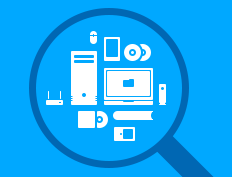 The Internet of Things revolution is fundamentally transforming businesses. The massive influx of IoT devices (all of which are basically computers) will save time and money and provide better value to customers, employees and other stakeholders. McKinsey estimates that IoT will create $4-11 Trillion in economic impact by 2025!
The Internet of Things revolution is fundamentally transforming businesses. The massive influx of IoT devices (all of which are basically computers) will save time and money and provide better value to customers, employees and other stakeholders. McKinsey estimates that IoT will create $4-11 Trillion in economic impact by 2025!
IoT will fundamentally transform factories, cities, retail, logistics, vehicles, offices & homes, and many other areas of our lives. Over the last ~25 years, software has automated all sorts of tasks that humans used to perform. In this next phase of automation, machines will similarly automate tasks that humans do today. For example:
- Inspecting infrastructure with drones
- 3D printing replacement parts in a factory that robots can deploy
- Automating the lighting and energy use of buildings
- Driverless vehicles
- And the list goes on…
This transformation demands a new paradigm to manage assets. Business leaders are asking themselves: How do you make the IoT revolution work for you rather than create additional headaches?
First, you have to plan to manage lots more stuff. As the volume of ‘things’ that come under your corporate umbrella multiplies, manual processes that don’t leverage the best sources of data in your organization simply won’t cut it. You need a way to pull data from existing systems whether user identity management, service desk or device management tools into a unified repository. The gold standard is to have a single source of truth for all your IoT devices.
Questions that you should be able to answer at your fingertips:
- Show me every instance of a particular sensor, where it is, whether it’s online and it’s current workload
- Run a report of assets that are offline or otherwise not deployed
- Alert me (and create a ticket) if a certain category of device doesn’t check-in during a specified period. Or if a certain category of device leaves a geofenced area.
- Show me every device that was end-of-lifed this quarter and the proof that sensitive information embedded was destroyed. (You’ll also want to share this report finance so that they can take advantage of the maximum tax deduction.)
- Create a proactive maintenance schedule that leverages field data on failure rates and value to the organization to optimize maintenance.
Let’s use an example of the lifecycle of an employee’s computer.
| Task | Typical Process | Best Practice |
|---|---|---|
| Buying |
|
|
| Receiving |
|
|
| Deploying assets to customers or end-users |
|
|
| Security |
|
|
| Tracking Inventory |
|
|
| Servicing |
|
|
| Software License Usage |
|
|
| Holistic View of Assets |
|
|
So, what can IT asset managers do now to prepare for the explosion of devices? First, think long term about the breadth of different ‘things’ in your organization. Start to keep a list of all the different types of machines along with their function and data-sharing capabilities. Second, take a hard look at all manual processes that take place in the concept of machines with an eye toward automating tasks that are manual in nature today. Third, think holistically about the entire lifecycle of machines from purchase to receipt to deployment to maintenance and end-of-life. Imagine how current processes would work with 10x or 20x the volume of machines. The IoT revolution is happening before our eyes, and the companies (and people) that prioritize managing all these machines will reap significant benefits.
Arthur Lozinski is the founder and CEO of Oomnitza. Oomnitza helps companies keep track of and optimize all the machines that power their business. From IT equipment to IoT sensors, Oomnitza is working with enterprise customers worldwide to optimize ‘Thing Management.’ Arthur founded Oomnitza in 2012, and under Arthur’s leadership, the company has achieved impressive milestones including signing hundreds of enterprise customers and building a world-class IT / IoT management platform. Before Oomnitza, Arthur spent time working at SAP and studied international business in Switzerland. He speaks German and Russian fluently.
The post How to Prepare for the Future of IT Asset Management appeared first on The ITAM Review.
Entdecke mehr von ITAM xPerts
Melde dich für ein Abonnement an, um die neuesten Beiträge per E-Mail zu erhalten.



